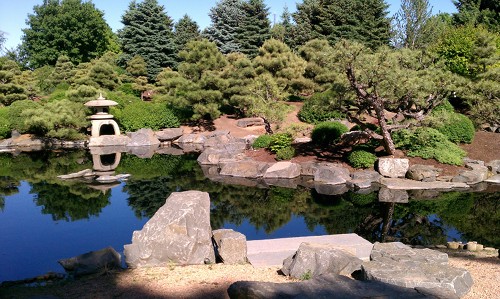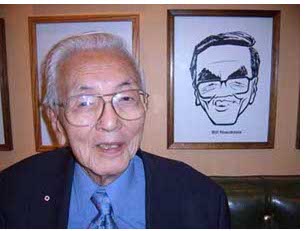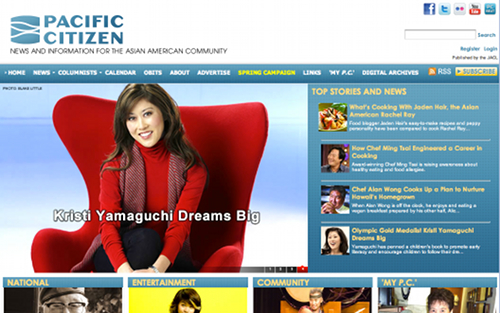July 11, 2011
[caption id="attachment_3686" align="aligncenter" width="500" caption="The Japanese Gardens as it currently looks at the Denver Botanic Gardens"]

[/caption]
Many Japanese Americans – especially older JAs – will be familiar with the name Bill Hosokawa.
He wrote a column, “From the Frying Pan,†which was a running commentary on Japanese America that ran in the
Pacific Citizen, the national newspaper of the
Japanese American Citizens League (JACL), a civil rights organization, for decades. In 1969 he published the first comprehensive history of Japanese Americans, “Nisei: The Quiet Americans,†that included information about internment. In 1982 he published “JACL: The Quest for Justice,†a history of JACL. He also published a collection of “Frying Pan†columns with added observations in 1998.
His final book, published in 2005, was “Colorado's Japanese Americans: From 1886 to the Present,†which most Japanese Americans across the country probably aren’t familiar with, but was well-received here in Colorado. Even at age 90, when he wrote the book, he was an agile wordsmith and a witty and straightforward storyteller, a gift that served him well in his long career as a journalist. He died two years later, in 2007.

I was interviewed for an obituary in the LA Times when Bill died, and the reporter couldn’t understand how important “Nisei†was to a JA kid in northern Virginia in the early ’70s, where my family lived when I first read Bill’s landmark book. Being in a multicultural place like California with Asian faces everywhere you look, a book about the history of Japanese Americans may seem unremarkable. The Times’ obit even pointed out that to the emerging third-generation activists who were radicalized and beginning to actively seek their identity, “Nisei†seemed tame and even reinforced stereotypes of the meek, accommodating model minority.
But to me, a kid in a northern Virginia suburb with no Asian friends — a banana if there ever was one — “Nisei†was like an electric jolt of identity. The radicalism came later; the first step for me was realizing that there were other people like me with an Asian face and Japanese values, but American heart and spirit.
Colorado is more like Virginia when it comes to Asian population and JA identity. I’m much more a part of an Asian American community now, but it’s a small and disparate one. So having a historical giant like Bill Hosokawa in the area was like having a lighthouse in a fog.
Bill Hosokawa was well-known nationally as one of the foundations of the Japanese American community’s national history.
He’s also remembered in Colorado, and not just by Japanese Americans. His legacy looms large in Denver and throughout his adopted state for his work as a writer and editor, and a diplomat who built lasting bridges with Japan. He was, as he quite accurately used to quip, “The most famous Japanese American in Japan.†And Colorado, too.






 I was honored to give a presentation and moderate a panel discussion in April at the Japanese American National Museum, “
I was honored to give a presentation and moderate a panel discussion in April at the Japanese American National Museum, “
